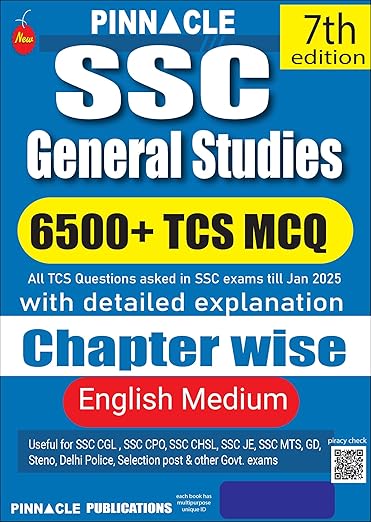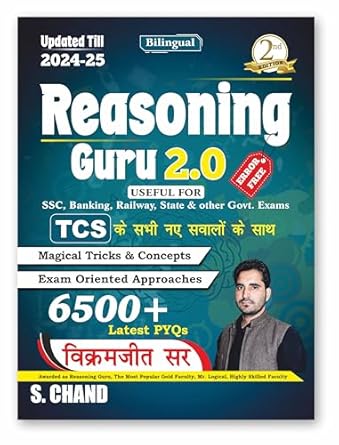- Language Development
- Sequence of Emerging
- Language Acquired
- Functions of Language
- Language and Thinking
- Culture, Language
Language and Thought Complete Syllabus and Study Material
What is Language?
Language, like most other aspects of complex human behavior, is difficult to define. For one thing, it is not synonymous with communication. There are many ways to communicate without language, although they are often less precise than language. Raising an eyebrow to someone may signal a message, but the message may be vague, unnoticed, or meaningless. And if the eyebrow twitched unintentionally, should a message be read? And how ? But language provides us with a set of symbols that can be referenced and defined, and it gives us a structure, or grammar, for organizing the symbols. Thus the use of language is more intentional, more purposeful, more goal - directed than communication without language. But how do human acquire symbols, grammar, and meaning? Let’s start by considering the typical order of language development.
Language Development: When the child is learning to walk he puts a lot of effort into it, seemingly ignoring verbal communication. But improvement seems to come rapidly in language once walking has become a well-mastered habit.
The Sequence of Language Development: The emergence of language is surprisingly orderly. Although there is considerable variation in the rate at which children learn speech habits, the sequence is relatively sturdy the table below summarizes the major steps in the acquisition of language.
From birth until about six months of age, an infant produces sounds such as grunts and cries that are genetically organized; these sounds appear to represent states of need, and the child has little or no choice about making them. He or she merely responds to the internal and external environment. At around six months, psychologists believe, children enter the babbling stage. Now many of child’s sounds more nearly resemble parts of adults’ words the child has discarded many sounds not heard in the environment. When a child is about a year old, eager parents detect-often prematurely. Single words that seem to approximate adults’ words. Soon some of these utterances are heard more frequently and regularly. When frequency and regularity increase, we can be fairly sure that the child is beginning to attach some meaning to the symbols, as with the word Mamma.
The Sequence of Emerging Language Behaviors
| Birth to 6 month | The infant period - The child produces such sounds as grunts as grunts, cries, gasps, shrieks, chuckling and cooing (at 4 month) |
| 6 month to 6 months | The babbling Period - The child produces units of utterances called babbling that differ from one situation to another. These units begin to be acoustically similar to adult utterances because the child slough off the irrelevant phonemes rather than acquiring new phonemes. |
| 9 months | The jargon Perios - Stresses and intonation patterns in strings of utterance units clearly correspond to those of the adult. some imitation of general language- like patterns can be identifed. specific morphermes cannot be distinguished easily by the listener. |
| 9 months to 1 years | The quiet period- The decrease in vocalization during this periiod of development is interesting. Language habits continue to development between the previous stage and next state, a transition occurs from the usse of jargon to use of words at the adult knows them. |
| 1 years to 2 years | The holophastic stage- The child single words to indicate whole phrases. He can use base structure but transformational rules to produce the surface structure have not been acquired. The single words is the start of the child's vocabulary. Pre conventional "words" are considered words by the parent because a given sound pattern is used consistently in similar situations ( for example using"muk" for milk). Thes cocalization sound like words and may be considered words by the pridful parents.The child understands much of what he is told. He demonstrates his comprehension by responding in a way that is meaningful to the asult - he may obey a command or point to an object. At the end of this period the child produces from 20 words( at bout 18 months) to 200 words words ( at about 21 months) |
| 2 years | The spurt in word development – Many conventional words appear in the child’s vocabulary, which increases from 300 to 400 words at 24 to 27 months to 1000 words at 36 months. He produces two – and three-word utterances, phrases, and sentences in which the pivot-open structure is well established. A given word can be used with a number of intonations: specifically, declarative (“doll,”) emphatics (“doll!”), and interrogative (“doll?”). |
| 3 years | The sentence period – At 36 to 39 months, the child can use 1000 words; he uses sentences containing grammatical features that anticipate the adult’s use of language rules. He uses functionally complete sentences – that is, sentences that clearly designate an idea as in the sentences, “This one riding horse.” – that are grammatically incomplete. |
| 3 to 5 years | The child uses sentences of all types: non-understandable sentences, functionally complete but grammatically incomplete sentences, simple sentences, simple sentences with phrases, compound sentences, complex sentences, and compound-complex sentences. |
| 5 years to maturity | The individual’s language system shows more frequent use of sentences with complex structure, increase in the variety of types of sentences, and increases in the length of sentences. |
How is Language Acquired?
The general progression of early language developments tells little about how and why language develops. There are two major and conflicting theories about that. One theory, the behaviorist position, uses only external, observable events to support its hypotheses. The competing theory, a psycholinguistic position, speculates about the events that occur inside the learner’s head.
Characteristics of Language Development How is Language Acquired?
The following are the main characteristics of language development :
- Semanticity: Words are used as symbols for objects, events or ideas.
- Syntax: The rules in a language for placing words in proper order to form meaningful sentences.
- Productivity: The capacity to combine words into original sentences.
- Displacement: The quality of language that makes one communicate information about objects and events in another time and place.
Functions of Language
Language performs a number of functions based on the purpose of its use. Some of its functions are as under :
- Instrumental: The way an individual satisfies the need by asking for something (May I take’ your pen?)
- Regulatory: Controlling another’s behavior (e.g.) teacher asks the student ‘Sit quiet, please”).
- Interactional: Used for maintaining interpersonal (e.g. wishing a friend a happy birthday)
- Personal: Where one talks about oneself ( I am feeling very depressed today)
- Heuristic: To find out the about the world in general (e.g. Is there any drug to cure AIDS?)
- Imaginative: Where one talks about one’s imagination (e.g. write an eassay on the topic” You are one the clouds”)
- Informational: To seek and give varied types of information (e.g. What is the current rat population growth in our country.?)
Problems of Language Development
Children develop language skills though socialization. But it is evident that all children are not equal in their language ability. Some children have problems in this regard. The main problems of language development faced by children are presented as under : Lack of initial listening and special opportunities.
- Poor concept development.
- Over emphasis on writing-prematurely.
- Inadequate cognition of world meanings.
- Inability to express through the spoken or written medium.
- Blocks due to genetic impairment of emotional problems of an improverished environment.
- Ambiguities in comprehension such as phonological, lexical or deep-structural ambiguities etc.
Language and Thinking
Early in our discussion of the working of memory, we said that the most important variety of memory, from the standpoint of learning, is verbal memory, which, we hope we have made evident, is related to thinking. But whether language and thinking are interdependent-that is, whether thinking cannot occur without words-has long been a matter of debate among psychologists. The pioneer behaviorist Watson considered thinking to be merely subvocal speech – speech that was not emitted. A totally contradictory position is taken by the Russian psychologist Lev Vygotsky, who holds that “Thought is not merely expressed words, it comes into existence through them”.
Except for the most orthodox of behaviorists, few psychologists would contend that we never think in words or sentences. Yet we do seem to be able to think in images, wordlessly, in certain circumstances. For example, if you are asked to think about your house, you do not need words. If, however, you are asked to explain how you feel about your house, you will have to put your thoughts into words. The crucial question is Did you need words to formulate your thoughts about the house, or is there some preword cognitive process called thought that needs words only for expression? Is that the reason we sometimes know what we want to say, but cannot find the words with which to say it?
Slobin Considered the issue and concluded : “Clearly, one cannot equate thought with either speech or language. But, Still language must play an important role in some cognitive processes”. One way in which language influences the cognitive processes was suggested by Whorf who concluded that the language one speaks determines how one thinks and what one thinks about. Research since Whorf indicates that, although language makes us sensitive to stimuli and influences how we think about thinks, language does not. Determine absolutely how or what we think. We may not have a word or a phrase or a sentence for a concept, yet the concept may well exist for us.
Culture, Language and the Classroom
The language we speak and the culture in which we live are closely related, but how they relate to one another is debated as vehemently as the differences between Skinner and Chomsky. For you as a teacher, the issue is likely to have more than theoretical importance: would you, perhaps subconsciously, expect less from a youngster who spoke black English vernacular – on the ground that the youngster came from an inferior culture? Or would you accept that the youngster’s speech merely reflected a different culture?
Before you answer the questions for yourself, let’s consider some diverse approaches to the language-culture relationship. It is more than tempting to think that cultural influences shape and change language. Cultural Interests, attitudes, and needs appear to determine at least some of language, DiVesta (1974) points out, and we expand and elaborate our vocabularies in accordance with those interests, attitudes and needs. Eskimos understandably have invented at least twenty terms for snow. A future engineer should be able to distinguish, as Brown (1965) suggests, among the ninety- odd varieties of engineering listed in the Massachusetts Institute of Technology’s catalogue. Even socially, lots of us find it necessary to increase out store of words, to wit; hip, far out, cool fab, bad, with it, groovy, heavy, righteous, dynamite, funky.
Implications for Teachers: In this reference, the teacher has a great responsibility. The teacher should be aware of the problems face by students in the classroom. He should create homely environment in his class. The students should feel free to express and share their feelings, and viewpoints with their teacher.
The teacher has to keep the following in his view point
- Language is learned and developed in a social context for functional purposes.
- Older children should be provided with ample scope to develop listening, speaking, reading and writing skills.
- Settings where language may be used for various purposes should be created.
- One should be cognizant of multilingual interferences identify them and provided remedies.
- Students’ creative efforts should be encouraged.
- Excessive writing or rote repetition should be. de- emphasized, a relaxed environment for free expression of ideas, thoughts and feelings should be provided.
- Students should be helped to develop early leading habits and enable them to do book reviews.




0 Comments